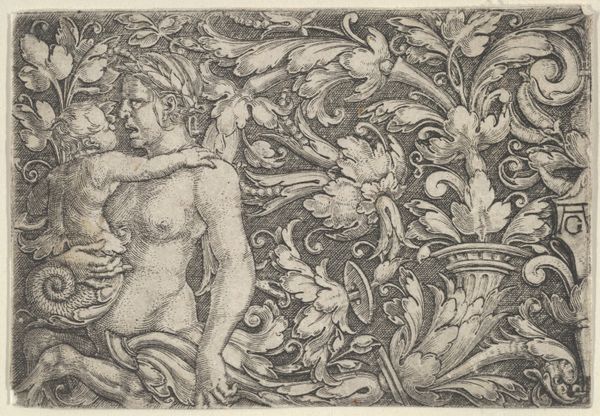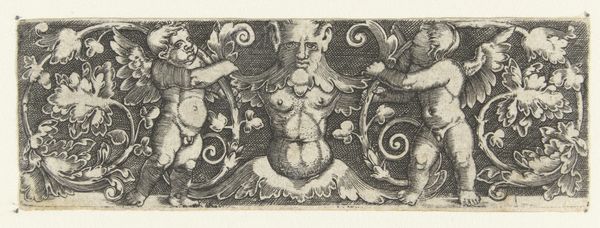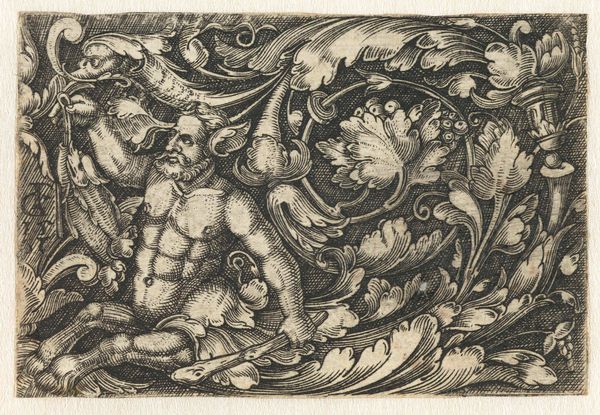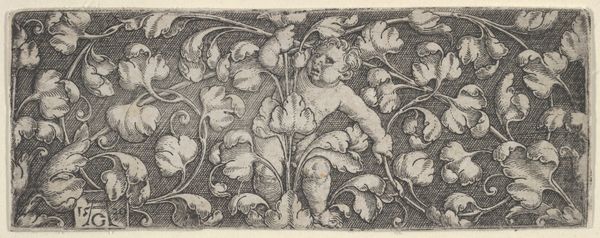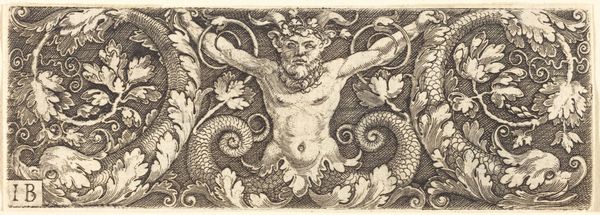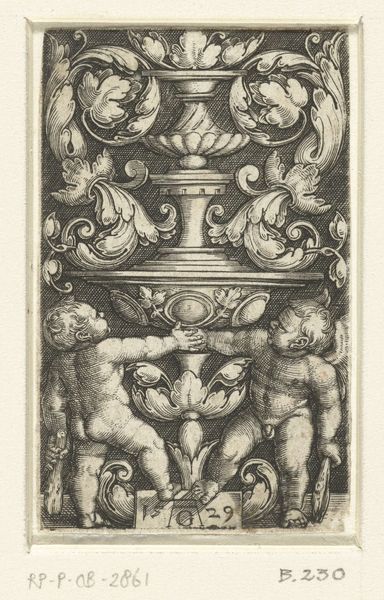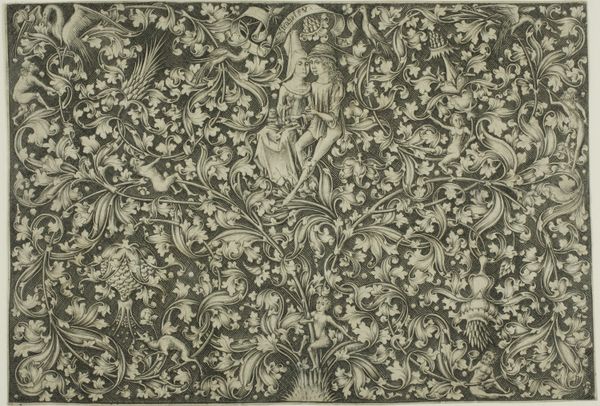
drawing, print, engraving
#
drawing
#
allegory
#
pen drawing
# print
#
figuration
#
11_renaissance
#
line
#
northern-renaissance
#
engraving
Copyright: National Gallery of Art: CC0 1.0
Editor: Here we have Heinrich Aldegrever’s "Cross Panel with Vine in Center and Tritons' Couple," created in 1537. It appears to be a print, an engraving maybe. I'm immediately struck by the intricacy, almost overwhelming! There’s so much detail packed into this relatively small space. What’s your take? What story do you think Aldegrever is trying to tell? Curator: Story is a generous word, isn't it? This isn't quite narrative. To me, it whispers of abundance, fertility...the endless, riotous growth of nature. It reminds me of trying to tame ivy in my garden – a losing battle, yet strangely joyful. I see the tritons – those half-human, half-sea creature figures – intertwined with the vine, representing a sort of wild, untamed energy, a potent life force. Doesn’t it make you consider how humanity sees itself in relation to nature? Are we the gardeners, or merely another tendril in the grand design? Editor: That's a really interesting way to put it! I was so caught up in trying to decipher who these figures *are* and what they’re doing, I didn't even consider the broader context. Curator: Perhaps Aldegrever wasn't interested in *who* they were, but what they represent. It’s like a fever dream rendered in incredibly precise lines. What would it mean, do you think, if the tritons are actively trying to untangle themselves? Editor: If they were trying to untangle themselves, maybe it would symbolize a desire for control, or a fear of being consumed by the natural world. That makes the little cherubs seem mischievous, almost challenging them to get away. It seems like I came in thinking about characters, and now I'm leaving thinking about forces. Thanks!
Comments
No comments
Be the first to comment and join the conversation on the ultimate creative platform.


